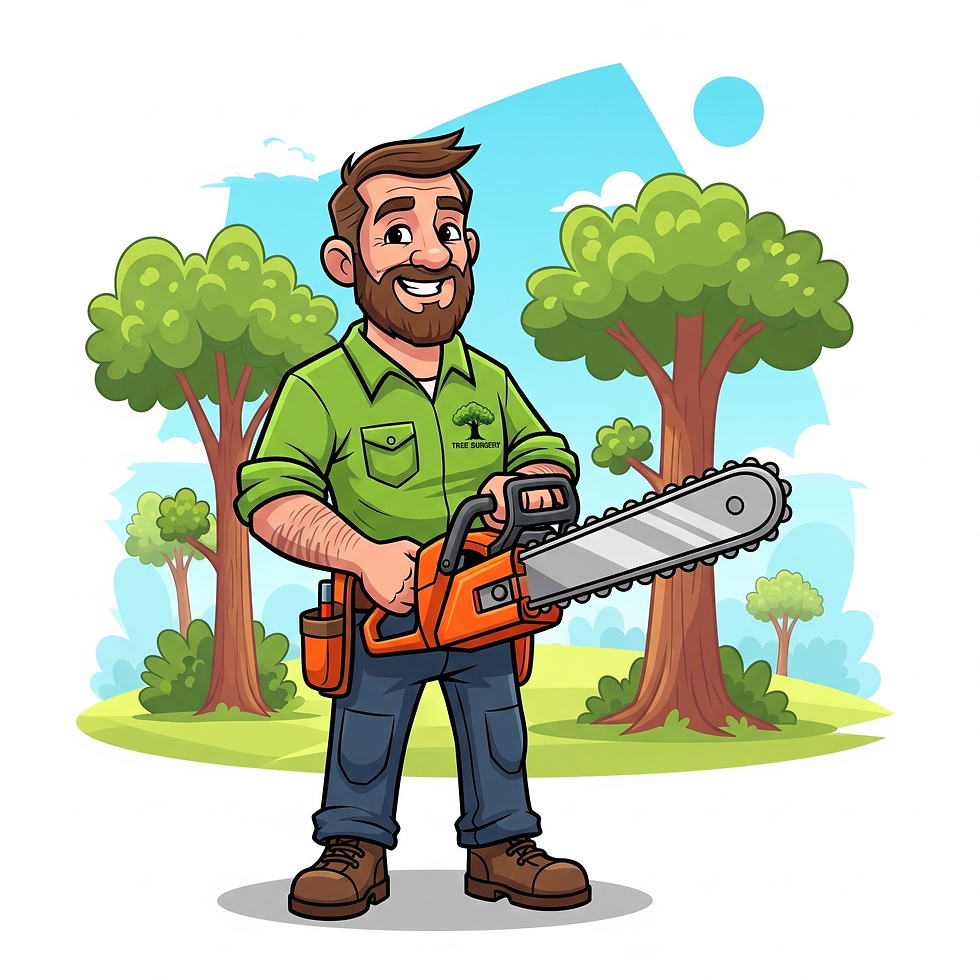Understanding Common Tree Diseases and How Professional Tree Surgeons Can Assist
- montajulunitelsear
- May 19
- 4 min read
Trees are vital for our environment and serve as natural air purifiers, providing shade and beauty across neighborhoods and parks. However, even the sturdiest trees can fall victim to diseases that threaten their health. Understanding these common tree diseases is essential for homeowners. Knowing when to seek help from professional tree surgeons can greatly enhance the longevity and vitality of your trees.
What Causes Tree Diseases?
Tree diseases arise from various sources, including fungi, bacteria, viruses, and pests. Environmental stressors also play a significant role, particularly factors like drought, extreme temperatures, and poor soil conditions. According to the USDA, trees suffering from drought stress are 50% more likely to succumb to infections. Regular maintenance and monitoring can reduce these risks significantly.
Common Tree Diseases
1. Fungal Infections
Fungal infections rank among the most frequently encountered tree diseases. Symptoms typically include discoloured leaves, wilting branches, and the presence of fungi on the tree. Two prevalent fungal infections are:
Powdery Mildew: This white, powdery fungus can stunt leaf growth and affect numerous species, notably lilacs and roses.
Root Rot: This condition often arises from poor drainage or overwatering, leading to tree decline. Approximately 30% of trees affected by root rot may die if not treated within the first few weeks of symptoms appearing.
Tree surgeons have the expertise and tools to diagnose and treat these infections effectively, often utilising fungicides or improving the tree's environment for optimal health.
2. Bacterial Diseases
Bacterial infections can lead to serious symptoms like leaf spots, galls, and bleeding cankers. Common examples include:
Fire Blight: This dangerous bacterial disease severely impacts apple and pear trees. It causes blossoms and shoots to blacken and wilt. Regions with high humidity see a 70% increase in incidence during the flowering period.
Bacterial Leaf Scorch: Leaves initially turn brown and die prematurely, significantly weakening the tree. Affected trees can lose up to 50% of their foliage, drastically impacting photosynthesis.
Tree surgeons can manage these diseases through effective pruning and, in some cases, antibiotics tailored to the specific bacterial threat.
3. Insect Infestations
Insects can be direct threats to tree health. They frequently create openings that allow diseases to enter. Common insects affecting trees include:
Bark Beetles: These pests can invade the bark, disrupting the tree's nutrient flow. An infestation can lead to the death of one in every three trees in an affected area.
Aphids: These tiny insects extract sap, weakening trees and acting as carriers for viral infections. A single colony can produce thousands of offspring in just a few weeks.
Professional intervention, including targeted tree pruning and pest control strategies, is essential for managing these issues.
4. Environmental Stress
Environmental stress can weaken trees, making them more vulnerable to diseases. Key stress factors include:
Drought Stress: Insufficient water leads to weakened trees, which may be up to 40% more likely to develop diseases.
Soil Compaction: Heavy traffic can restrict root growth and reduce oxygen levels in the soil, making trees more susceptible to diseases.
Tree surgeons can assess these conditions and provide strategies to alleviate stress, enhancing tree resilience and growth.
5. Viral Diseases
Viral diseases are less common but can be highly detrimental. They are notably challenging to control due to the lack of known cures. Symptoms may include:
Mottled or Distorted Leaves: Viruses such as the Tomato Spotted Wilt Virus cause leaf deformities, which can affect functionality significantly.
Stunted Growth: Trees infected with viruses may show little to no growth over several seasons, making them vulnerable to other threats.
While there are no cures, timely detection and removal of infected trees by tree care professionals can prevent further spread and protect healthy trees.
The Role of Professional Tree Surgeons
Importance of Tree Care
Tree surgeons specialise in maintaining tree health and sustainability. They have the knowledge and training necessary to identify diseases and their causes, which is essential for preserving tree longevity. Their expertise ensures trees thrive in their environments, benefiting both homeowners and communities.
Tree Maintenance Services
Regular tree maintenance through professional services, including tree pruning and treatments, can reduce disease occurrence. Professional tree surgeons help maintain tree health by:
Pruning Dead or Diseased Branches: This practice limits the spread of infections and enhances the overall structure of the tree.
Fertilisation: Supplying essential nutrients can bolster growth and help trees resist diseases. A well-nourished tree has a 60% better chance of fighting off infections.
Early Monitoring: Regular assessments are critical for early detection. Tree surgeons can identify signs of distress well before they develop into more significant problems.
Tree Removal
In situations where a tree cannot be saved, removal may be necessary. Professionals ensure safe execution of the removal process, minimising risks to properties, nearby trees, and wildlife.
Ongoing Care for Healthy Trees
Caring for trees is a continuous commitment that requires knowledge, vigilance, and timely action to combat common diseases. By understanding tree diseases and consulting with professional tree surgeons, property owners can maintain healthy, vibrant trees that enhance their landscape.
For generations to come, well-cared-for trees will continue to provide beauty, shade, and invaluable environmental benefits.


Comments